MAYA PROJECT RESULTS: Building Human Resources for
Conservation
|

|
U.S. field biologists teach local participants bird
identification and data collection procedures
at a banding table deep in the
forest.
|
More than 100 Latin Americans, mostly local Guatemalan men
living in the project area, participated in Maya Project field
research. Many individuals worked with the project for several
years. Some 20 individuals became the leaders of various
sub-projects, often for multiple years. In all, about 35
individuals became highly experience ecological field
technicians, and several moved well beyond the technician level.
|

|
Gumercindo (Chindo) Garc�a worked on songbird teams,
and was our chief agricultural extensionist, introducing local farmers to nitrogen-fixing cover crops.
|
Training within the Maya Project was achieved mainly via an apprenticeship model. Several well-trained graduate students and professional field biologists initially led various segments of the research,
working closely with a small group of local men, who in this fashion received a large amount of one-on-one training and experience. Many of these individuals later took charge of these project segments, after graduate students
finished their thesis research. The more experienced members of these local workers would then pass on to newly involved local men the skills and knowledge necessary. We also conducted a continual series of training sessions
addressing various topics.
Sub-project leaders (local men) normally headed up groups of
three to five field workers. Under the supervision of the project
director, these sub-project leaders took on the bulk of
day-to-planning for their projects, programming the activities
of crew members, reviewing field notes, and providing personnel
management of all sorts. Project leaders had great
responsibility in extracting and summarizing field data, and in
writing initial drafts of yearly progress reports. Many of them
became coauthors of papers published in scientific journals, and
in various book chapters. In addition, several individuals traveled to international science and conservation meetings in
Mexico, Guatemala, Costa Rica, and Ecuador, where they presented
project results, with enthusiastic receptions.
We also supported formal education for several individuals.
We assisted many individuals in finishing their primary and
secondary schooling via weekend programs. We provided
transportation from their remote villages to the departmental
capital where classes were held, and covered other costs as
well.
We provided full scholarships for four individuals in a
three-year college program in Conservation and Management of
Tropical Forests; three individuals completed this program,
which assisted them in obtaining excellent local jobs in the
conservation field.
|

|
Hector Madrid and Chilla Marroqu�n were among
four local
participants who traveled to Costa
Rica in 1993 to present papers at the
First
International Wildlife Management Congress.
|
Recent Work Histories of Maya Project Alumni
The bulk of Maya Project field research ended with the end of
the 1996 field season. Hence the many local Guatemalan men who
participated in the project have been out from under the
protective "umbrella" of the Maya Project for four
years. Has the training and experience they gained in the Maya
Project proved useful to them since that time?
Of the 35 individuals who received the most training and
experience within the Maya Project, about half have continued to
be employed in the science and conservation field in Guatemala,
since project field work ended. Here we provide a brief update
on the careers of some of the central participants of the Maya
Project.
It is most gratifying to report on the activities of many of
these men over the past four years. Such a report leaves little
doubt in our minds that the Maya Project had a lasting impact,
in some small way affecting the course of conservation in this
region of globally important tropical wildlands.
Julio Madrid (Julio Alfredo Madrid Montenegro)
|

|
Julio Alfredo Madrid Montenegro
|
Julio participated in the Maya Project throughout its
nine-year
duration, and served as project Field Administrator during the
last few years of his involvement. Before beginning with the
Maya Project, Julio was already a park guard with CECON (the
Center for Conservation Studies of Guatemala's San Carlos
University)--CECON kindly lent Julio to the Maya Project
throughout the duration of the project. Julio was a key figure
in our studies of the Ornate Hawk-Eagle, and, along with Hector
Madrid and Rodolfo Cruz, has conducted more field research on
this species than anyone else on earth. Julio was also a key
figure in our research on resident and migratory songbirds,
conducting a great deal of mist-netting, spot-mapping, and point
counts. He also played a lead role in developing and conducting
environmental education efforts in local schools. Within the
Maya Project, Julio gave talks at scientific meetings in Mexico,
Guatemala, Costa Rica, and Ecuador.
We provided Julio with a full scholarship in a
three-year college
degree program in Conservation and Management of Tropical
Forests, where he obtained a very solid knowledge of forestry
and tropical dendrology--i.e., identification of tropical forest
trees. With his combination of expertise ranging from dendrology
to songbirds and raptors, Julio is a highly respected and widely
sought-after biologist in Pet�n. For the past several years,
Julio has been employed by CONAP--Guatemala's National Council
of Protected Areas--the agency responsible for management of the
Maya Biosphere Reserve and other protected areas. Julio
currently serves as Regional Chief of the Fauna Section.
Hector Madrid (Hector David Madrid Montenegro)
|
 |
Hector David Madrid Montenegro
working
on annual Ornate Hawk-Eagle report.
|
Hector Madrid took part in the Maya Project from 1990-1996,
and served as Chief of Logistics and Purchases for several
years. Heading up the Ornate Hawk-Eagle field work during 1992,
Hector became one of the world's leading experts on this
dramatic raptor. Hector presented a talk on studying tropical
raptors via radio-telemetry at a scientific meeting in Costa
Rica. Like his brother Julio, we supported Hector in a
three-year
college program in Conservation and Management of Tropical
Forests. Hector gravitated strongly toward the forest management
curriculum, and for the past few years has served as a regional
forester for INAB--Guatemala's National Forestry Institute. In
this capacity, Hector uses his experience, which spans from
dendrology to raptor ecology, to evaluate forest management
plans in connection with permitting of timber extraction and
related activities.
Normandy Bonilla (Normandy Bonilla Gonz�lez)
|

|
Normandy Bonilla Gonz�lez
examines wind-dispersed
seeds of a liana.
|
Normandy Bonilla participated in the Maya Project from
1990-1996, and was a key figure in our research on the Mottled
Owl. He also played a lead role in our educational efforts in
local grade schools, and presented results of Mottled Owl and
Black-and-White Owl research at a scientific meeting in Ecuador.
We supported Normandy in the same college program in
Conservation and Management of Tropical Forests mentioned above.
Normandy conducted his thesis project on community forestry
concessions, an arrangement whereby local communities receive
the legal right to manage and rationally exploit timber and
non-timber products of portions of the Buffer Zone and Multiple
Use Zones of the Maya Biosphere Reserve. For the past several
years Normandy has worked within the Maya Biosphere Reserve as a
specialist in community forestry concessions for ProPet�n, a
local Guatemalan conservation group affiliated with the
U.S.-based group, Conservation International.
Tomas Dub�n (Tomas Dub�n Ortiz)
|
 |
Tomas Dub�n Ort�z at songbird
banding table.
|
Tomas Dub�n participated in the Maya Project from 1992-1996,
taking part in research on Roadside Hawks and various species of
kites, and doing a great deal of mist-net sampling of forest
songbirds, as well as vegetation sampling. Tomas also played a
role in our environmental education work in local primary
schools. Tomas studied for three semesters in the college
program mentioned above, which assisted him in obtaining the
position he has held for the past few years, working with
community forestry concessions in the Maya Biosphere Reserve,
for ProPet�n, a local conservation group affiliated with
Conservation International.
|

|
Ciriaco (Chilla) Marroqu�n Valles
seasonal songbird biologist and
erstwhile professional soccer player.
|
Chilla Marroqu�n (Ciriaco Marroqu�n Valles)
Chilla Marroqu�n played a key role in the Maya Project from
1992-1995, working mainly with resident and migrant songbirds.
During that time, Chilla travelled with us to Costa Rica, where
he spoke about our songbird research program at an international
science meeting. For the past year, Chilla has been employed by
a branch of Guatemala's National Council of Protected Areas in
the highly endangered forests of southern Pet�n. Chilla and
Chema Castillo are playing a lead role in efforts to inventory
and monitor biotic integrity of a series of forested protected
areas, mainly using point-counts to collect data on bird
community composition.
Chema Castillo (Jos� Mar�a Castillo)
|

|
Jos� Mar�a (Chema) Castillo (right) and
graduate student
Theresa Panasci
|
Chema took part in several raptor studies within the Maya
Project. Since that time he has worked for a few different
conservation groups, conducting avian inventory and monitoring
studies in various parts of the Maya Biosphere Reserve, in
addition to telemetry studies of confiscated fauna released back
into the wild. At the current time, Chema works for Guatemala's
National Council of Protected Areas, using birds as a tool for
ecological inventory, evaluation, and monitoring in a serious of
highly threatened protected areas in southern Pet�n.
Miguel V�squez (Miguel Angel Vasquez
Marroqu�n)
|

|
Miguel Angel V�squez Marroqu�n
with a Swallow-tailed
Kite chick.
|
Miguel V�squez worked with several raptor species within the
Maya Project, especially the Swallow-tailed Kite and three other
kite species. Miguel played a leadership role within these
studies, and presented results of Swallow-tailed Kite research
at a scientific meeting in Ecuador. Since that time, Miguel
worked for several years as the lead field technician in the
Wildlife Conservation Society's Guatemala program, where he did
telemetry studies of Ocellated Turkeys, among other things.
Miguel continues to work as one of the most respected park
guards in Tikal National Park. For many years Miguel has
systematically gathered information on the phenology of forest
trees at Tikal, and he has written a book-length manuscript
reporting these results.
Gregorio L�pez (Gregorio L�pez Avila)
|

|
Gregorio L�pez Avila holds a Black Hawk-Eagle.
|
Gregorio L�pez worked within the Maya Project for five
years, participating mainly in research on the Black Hawk-Eagle,
Crested Eagle, and Gray-headed Kite. For the past
two-three years,
Gregorio has worked for The Nature Conservancy and Defensores de
la Naturaleza, one of Guatemala's largest local conservation
organizations. He is engaged in ecological inventory and
monitoring efforts, based mainly on bird populations, in the
remote Sierra del Lacand�n National Park in western Pet�n.
Estuardo Hern�ndez (Aquiles Estuardo Hernandez
C�rdova)
|

|
Aquiles Estuardo Hern�ndez C�rdova
conducts a tree-top
raptor point count.
|
Participating in the Maya Project throughout its
nine-year
history, Estuardo Hern�ndez played a unique role. He conducted
more raptor point counts in and over the forest than did any
other individual within the project. In all likelihood, the only
person in the world who has conducted more tropical forest
raptor counts than Estuardo is Jean-Marc Thiollay, a French
raptor biologist. Estuardo traveled with us to an international
meeting in Costa Rica in 1993, reporting on our methods for
censusing tropical forest raptors. Estuardo is Chief Park Guard
at Tikal National Park, and is also the assistant to the
newly-created Park Biologist position.
Tino L�pez (Juventino L�pez Avila)
|

|
Juventino L�pez Avila in emergent
tree-top,
ready to census Mealy Parrots.
|
Tino L�pez worked within the Maya Project from 1991 through
1996, participating in Ornate Hawk-Eagle research, and leading
research teams in studies of the Black Hawk-Eagle, Crested
Eagle, and Gray-headed Kite. Since the end of Maya Project field
work, Tino has been employed full-time for several years in a
study of Mealy Parrot (Amazona farinosa) migration and
reserve design conducted by Ph.D. candidate Robin Bjork of
Oregon State University. With his unique blend of experience
conducting field work on two species of hawk-eagles, the Crested
Eagle, and the Gray-headed Kite, Tino has a fieldwork background
with large tropical forest raptors that would compare favorably
with anyone. Now, with several years of experience with parrots,
he should continue to be worth his weight in gold as an avian
field researcher in the Selva Maya.
Oscar Aguirre (Oscar Anibal Aguirre Barrera)
|

|
Oscar Anibal Aguirre Barrera prepares a radio-tagged
White Hawk for release.
|
Oscar Aguirre worked with the Maya Project from 1991 through
1996. Oscar worked with a number of raptor species, but
especially the White Hawk and the Orange-breasted Falcon. Second
only to Aaron Baker, Oscar has no doubt spent more time
observing Orange-breasted Falcons in the field than anyone in
the world. Since 1997, Oscar has worked for Ph.D. candidate
Robin Bjork in her study of intra-tropical migration of the
Mealy Parrot. Oscar remains very enthusiastic about conducting
field studies of birds.
Chalo C�rdova (Marcial C�rdova Alvarez)
|

|
Marcial (Chalo) C�rdova Alvarez at
the songbird banding table.
|
Chalo C�rdova participated in the Maya Project from 1992
through 1996. Chalo worked in studies of various birds, but
worked far more in vegetation sampling, as Mark Schulze's main
field assistant. After Maya Project field work ended, Chalo
continued to conduct vegetation sampling, employed by Ph.D.
candidate Mark D. Schulze (Pennsylvania State University). Most
recently, for the past two to three years Chalo has worked for Ph.D.
candidate Robin Bjork in her study of Mealy Parrot ecology and
migration. With excellent tree identification skills and much
experience in botanical field sampling, Chalo has a valuable
combination of experience with birds and vegetation.
Rodolfo Cruz (Jos� Rodolfo Cruz Echeverr�a)
|

|
Donning goggles, helmet, and a thick
jacket, Jos�
Rodolfo Cruz Echeverr�a
climbs to an Ornate Hawk-Eagle nest
--not a task for the
faint of heart.
|
Rodolfo Cruz headed up our Ornate Hawk-Eagle field research
team from 1993-1996. Along with Hector and Julio Madrid, Rodolfo
is hence one of the most expeirenced field workers in the world
with the Ornate Hawk-Eagle. For the past several years, Rodolfo
has worked as a driver and field technician for CONAP-OLAFO, a
private-government partnership working with forest communities,
promoting sustainable use of forest resources in northern Pet�n,
Guatemala.
Chepe C�rdova (Jos� Lu�s C�rdova)
|

|
Jos� Lu�s (Chepe) C�rdova poses
in a corn field whose soil has been
enriched by use of frijol abono.
|
Chepe C�rdova worked within the Maya Project from 1992
through 1996. Chepe worked with a number of raptor species, and,
along with Estuardo Hern�ndez, conducted a large amount of
raptor sampling via point counts, spot mapping, and other
methods. Since the end of the project, Chepe has used the
experience he gained in using GPS (Global Positioning System),
first with a private land-surveying firm, and now as a surveyor
with INTA, the National Institute for Agrarian Reform.
Pito Jurado (Nery Oswaldo Jurado)
|

|
Nery Oswaldo (Pito) Jurado
places a band on a small songbird.
|
Pito Jurado worked with the Maya Project from 1992 through
early 1995. He took part largely in work with migrant and
resident songbirds, and also gained experience with various
raptor species. For the past several years Pito worked for the
United Nations as a driver; he recently began work for
Defensores de la Naturaleza, as part of a team using birds as
tools in ecological monitoring of the Sierra del Lacand�n
National Park in northwestern Pet�n.
Alejandro Manzanero (Alejandro Manzanero
Quixch�n)
|

|
Alejandro Manzanero Quixch�n (right),
along with
researcher Rick Gerhardt,
places a radio on a Barred Forest-Falcon.
|
Alejando worked with the Maya Project from 1991 through 1995,
gaining extensive experience with several species, especially
the Bicolored Hawk, Barred Forest-Falcon, and Collared
Forest-Falcon. Using experience he gained with GPS in the Maya
Project, Alejandro worked for the past few years as a land
surveyor's apprentice, and is now a surveyor himself.
Conclusions Regarding Building of Local Human Resources
|

|
Ricardo Madrid and daughter.
|
We feel that the Maya Project, through the training,
experience, and opportunities it brought to local people, has
left a lasting legacy in the Selva Maya. In some small way, the
project helped change the human landscape for conservation in
the region. We feel extremely vindicated in our decision to
invest heavily in local people, most of whom did not have
advanced education.
Highly intelligent, motivated individuals exist everywhere,
and given the opportunity, some of these individuals will prove
to be keenly interested in field biology and in conservation
issues. Our experience suggested the value of searching out such
local individuals and investing in their development.
Guatemalans who participated in Maya Project field work
include:
|
Aqu�les
Estuardo Hern�ndez C�rdova
Cristobal Mateo Morales
Miguel Angel V�squez Marroqu�n
Julio Alfredo Madrid Montenegro
Feliciano Gutierrez Ram�rez
Jos� Dolores Ramos
Apolinario de Jesus Mendoz
Israel Segura Cornel
Rolando Cruz L�pez
Encarnaci�n Pela�z Orrego
Gilberto Lima Aroche
Angel Manuel Enamorado Guzm�n
Alejandro Manzanero Quixch�n
Castro An�bal Recinos
Hector David Madrid Montenegro
Edi Rub� Mart�nez L�pez
Sixto Higinio Funes Alvarado
Jos� In�s C�rdova May�n
Roger Roussell Botzoc Garc�a
Victor Manuel Quixch�n
Rolando Ramos Hern�ndez
Normandy Bonilla Gonz�lez
Jos� Mar�a Castillo
Rolando Caal
Sergio Roberto Osorio Rivera
Mario C�sar Lima Aroche
Oscar Ren� Artola Ram�rez
Rigoberto de Jes�s S�ndoval P�rez
Santiago Choc Chocooj
Oscar Anibal Aguirre Barrera
Francisco Gir�n Manzanero
Hector de Jes�s Gir�n Manzanero
Victor Manuel Moro M�ndez
Amilcar Morales Guti�rrez
Manuel de Jes�s Chub Avalos
Erwin Leonel Hidalgo Tob�r
Arturo Ar�valo Orrego
Benjam�n Gonz�lez C�rdova
Jos� Alfredo Osorio Cruz
Juventino L�pez Avila
|
Antonio
Ramos Caal
Isabel C�rdova May�n
Cesar Alfonso Requena
Rosendo Cruz
Carlos Humberto Payeras
Constantino Sagastume
Cesar Acu�a
Manuel Flores
Jes�s Yat
Juan Humberto Morales
Oscar Ramos
Florencio Vicente
Julio Oswaldo Cuellar
Rony Concepci�n Hern�ndez
Tom�s Garc�a Campos
Francisco Fredy Guerra Castillo
Jos� Rodolfo Cruz Echeverr�a
Marcos Castillo Riveria
Ricardo Adolfo Madrid Montenegro
Walter Erubiel Mart�nez Avila
Jos� Lu�s C�rdova
Carlos Solano Mateo J�arez
Eladio Mart�nez Ram�rez
Gumercindo Garc�a C�rdova
L�zaro Carrillo Solarzano
Tom�s Dub�n Ortiz
Francisco C�rdova Orrego
Gregorio L�pez Avila
Antonio Aguirre Barrera
Nery Oswaldo Jurado
Ciriaco Marroqu�n Balles
Marcial C�rdova Alvarez
Walter Ramiro Tobar
Gabriel Hern�ndez Garc�a
Nehemias Castillo Riveria
Oliverio Ren� Ba
Egidio Reyes Moreno
Ruben Ar�valo Orrego
Eulalio Ordo�ez G�mez
Lu�s Antonio Oliveros Figueroa |
U.S. Graduate Students and field biologists who played
major roles in field work included:
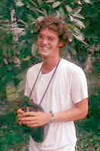 |
Photo to be added
|
Photo to be added
|
Photo to be added
|
|
Aaron J. Baker
|
Elbert C. Cleaveland
|
Gregory Draheim
|
Craig J. Flatten
|
|
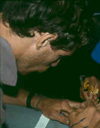
|
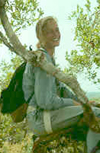 |
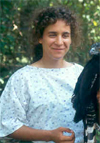
|
Photo to be added
|
| Richard P. Gerhardt
|
Laurin E. Jones
|
Theresa Panasci
|
Margaret N. Parker
|
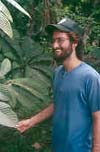 |
Photo to be added
|
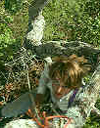 |
Photo to be added
|
| Mark D. Schulze
|
Nathaniel E. Seavy
|
Jason Sutter
|
Russell K. Thorstrom
|
|
|
|
|
|
Photo to be added
|
Photo to be added
|
| Charles W. Turley
|
David F. Whitacre
(project director and principal investigator)
|
|
Initiators of the Maya Project: |
|
Photo to be added
|
Photo to be added |
William A. Burnham
|
J.
Peter Jenny |
Seasonal field biologists included:
Brian J. Enquist
Dawn M. Gerhardt
Paula M. Harris
Jessica Hunt
Jorge Montejo D�az |
Sara E. Pedde
Corina E. Roe
Rafael Villegas Patraca
Christina H. Schwartz |
NEXT

27
|